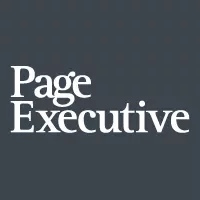Looking to hire your next leader?
Get in touch with one of our consultants now to discuss your leadership talent requirements.

Workplace 4.0 is becoming more accessible to professionals with disabilities, but building an inclusive company goes beyond hiring for diversity and checking boxes.
The global pandemic has been extremely difficult for people with disabilities – for example, in the UK, 71% of employed professionals with disabilities feel their work has been impacted, with 18 to 24 year olds feeling it most acutely. Fear over redundancy, requests to shield due to increased clinical risk and economic uncertainty are squeezing equality out of the workplace. But we have a prime opportunity to restore it – and more strongly than ever. The rise in remote work, conversations around mental health and a focus on D&I have spurred a movement towards greater accessibility for colleagues with disabilities.
As HR departments and recruiters around the globe reboot, we’re realising that one size has never fitted all. The long-overdue transformation to make our workplaces more inclusive starts in the C-suite, in attracting, positioning and training executives who can build equality into our environment, culture and business practices.
Even before the pandemic, inclusive organisations saw diversity become a key driver for success. According to an Accenture white paper, companies that succeeded in incorporating candidates with disabilities have seen 28% higher revenue and two times higher net income.
According to the National Organization on Disability, there are 33 million people of working age with disabilities in the US, and 75% of them want to and can work – but are not employed. Even in the Nordic countries, and other parts of the world like Mexico and Switzerland, which have the highest employment rates for people with disabilities, the challenge goes beyond merely hiring a more diverse workforce.
“If we bring in a group of diverse individuals without a support system or culture of inclusivity, there is no way we can retain a diverse workforce,” explains Laura Salkowski, Associate Director HRBP.
First and foremost, leaders must educate themselves on what’s needed and then work with their managers and teams to ensure that once someone with a disability is onboarded, they feel welcome, empowered and embraced by their co-workers, as Sidhika Hemraj, Diversity Equity & Inclusion Lead explains:
Leaders need to be the biggest allies for those living with disabilities. They also need to be fully engaged with the Facilities department to make sure that offices are accessible and to provide managers with the right resources to share with their teams.
Sidhika Hemraj, Diversity Equity & Inclusion Lead
Keep it real
Ensuring workplace safety and accessibility is paramount, but disability inclusion goes beyond building a ramp or adapting a desk. Core elements such as digital accessibility, self-ID surveys and other due diligence can seem overwhelming, but there are practices to help companies develop effective
Not all disabilities are visible, and leaders must approach the sensitive issue of disclosure with empathy and discretion, as Steve Ingham, CEO, asserts:
“Many people would prefer not to disclose their disability because they’re worried about positive or negative discrimination. But there are ways of anonymously measuring the proportions in your business. So you might not identify that one individual as disabled, but you might at least get an idea of the proportion of people that have mental health challenges or physical disabilities or illnesses.”
Leaders also have a responsibility to set the tone so that when a person with disabilities joins the workforce, their needs are met efficiently and effectively and they don’t feel singled out or sidelined.
You don't have to be a woman to care about gender. You don't have to be black to care about unity and race. you don't have to be disabled to care about disabled people. Authenticity is what counts. And it's not just being passionate about inclusion, it's about taking action.
Steve Ingham, CEO PageGroup
Authenticity often implies a shake-up of company culture, but the rewards can be exponential: physical and psychological barriers are broken down, cohesion and motivation improve, and employees of all abilities feel they can fulfil their potential.
Companies that position leaders to proactively support people with disabilities show that they accept and appreciate candidates who are different. This in turn builds solidarity among their employees, and can boost attraction and retention of top talent.
If companies are able to develop inclusive culture, where they're willing to ask questions and genuinely listen to people, to enable them to perform at their best, it's not only going to support people with a disability, it's going to support everyone.
Ollie Thorn, Senior Manager
Leaders looking to develop a more inclusive culture should include themselves in messaging and awareness-raising efforts. In the US, many companies celebrate National Disability Employment Awareness Month, benchmark their progress with barometers and evaluation tools from non-profit organisations, and feature employees with disabilities in branding materials.
Enhanced training can help people with disabilities to feel more welcome and supported, as Salkowski explains: “One of the most difficult things people with disabilities encounter when they adopt a new role is looking around the room and not seeing a single person that looks like themselves.”
Surveying employee attitudes can kick-start a company’s approach and even encourage individuals to speak up about their own experiences with disabilities. Some organisations also nominate diversity champions or advisors, or support disability resource groups within and beyond their own four walls.
An inclusive company culture is ultimately based on the concept that there is no more “them and us”. We are all us, with all of our abilities and disabilities, as Ingham concludes: “20% of the population are disabled in some way and 80% of that 20% ‒ 16% of the population ‒ will become disabled during their lifetime. Imagine if 16% of our employees resigned one day ‒ where would we be as an organisation?”
Workplace 4.0 is becoming more accessible to professionals with disabilities, but building an inclusive company goes beyond hiring for diversity and checking boxes.
Get in touch with one of our consultants now to discuss your leadership talent requirements.

Choose your country from the list below to complete the brief form:


